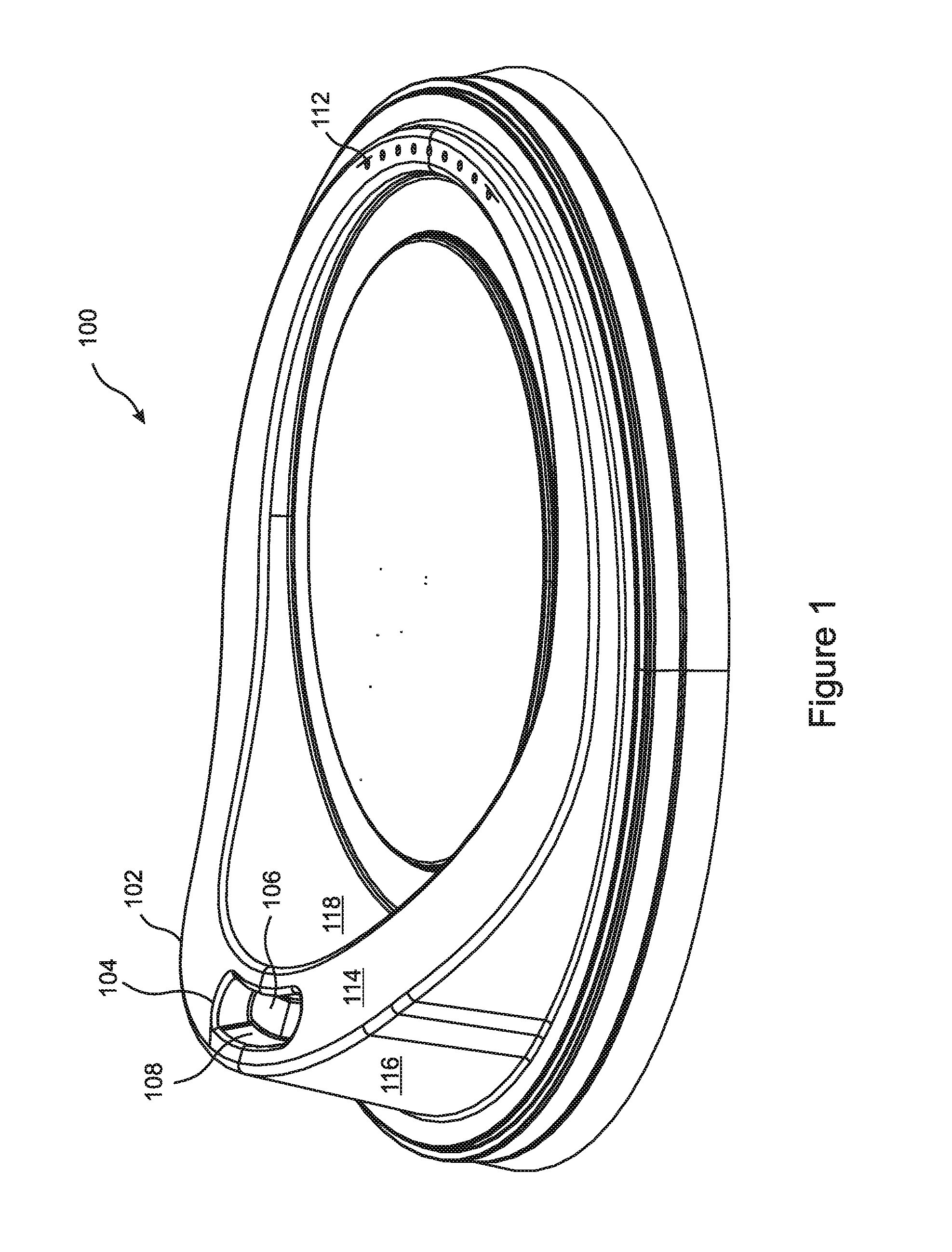Two-piece splash and spill resistant lid assembly and method therefor
- Summary
- Abstract
- Description
- Claims
- Application Information
AI Technical Summary
Benefits of technology
Problems solved by technology
Method used
Image
Examples
Embodiment Construction
[0056]The present invention is generally directed towards a lid that engages with a drinking cup or a similar vessel and allows a user to drink therefrom while naturally inhibiting splashing and spilling of beverage from the drinking cup without requiring use of an orifice sealing device or plug, and without requiring the user to plug and unplug the drinking orifice with a connected or separate plug member. The following description of one or more exemplary embodiments, in conjunction with accompanying drawings of representative lids, is offered as illustrative of the invention, but should not be regarded as restricting the scope of the invention.
[0057]As noted elsewhere, the lid constructions according to various embodiments of the invention offer particular utility for disposable drinking cups, which are typically used for holding cold and hot beverages and are generally constructed from paper, plastic, or foam materials. It will be apparent to those skilled in the art that the li...
PUM
| Property | Measurement | Unit |
|---|---|---|
| Size | aaaaa | aaaaa |
| Shape | aaaaa | aaaaa |
| Width | aaaaa | aaaaa |
Abstract
Description
Claims
Application Information
 Login to View More
Login to View More - R&D
- Intellectual Property
- Life Sciences
- Materials
- Tech Scout
- Unparalleled Data Quality
- Higher Quality Content
- 60% Fewer Hallucinations
Browse by: Latest US Patents, China's latest patents, Technical Efficacy Thesaurus, Application Domain, Technology Topic, Popular Technical Reports.
© 2025 PatSnap. All rights reserved.Legal|Privacy policy|Modern Slavery Act Transparency Statement|Sitemap|About US| Contact US: help@patsnap.com



